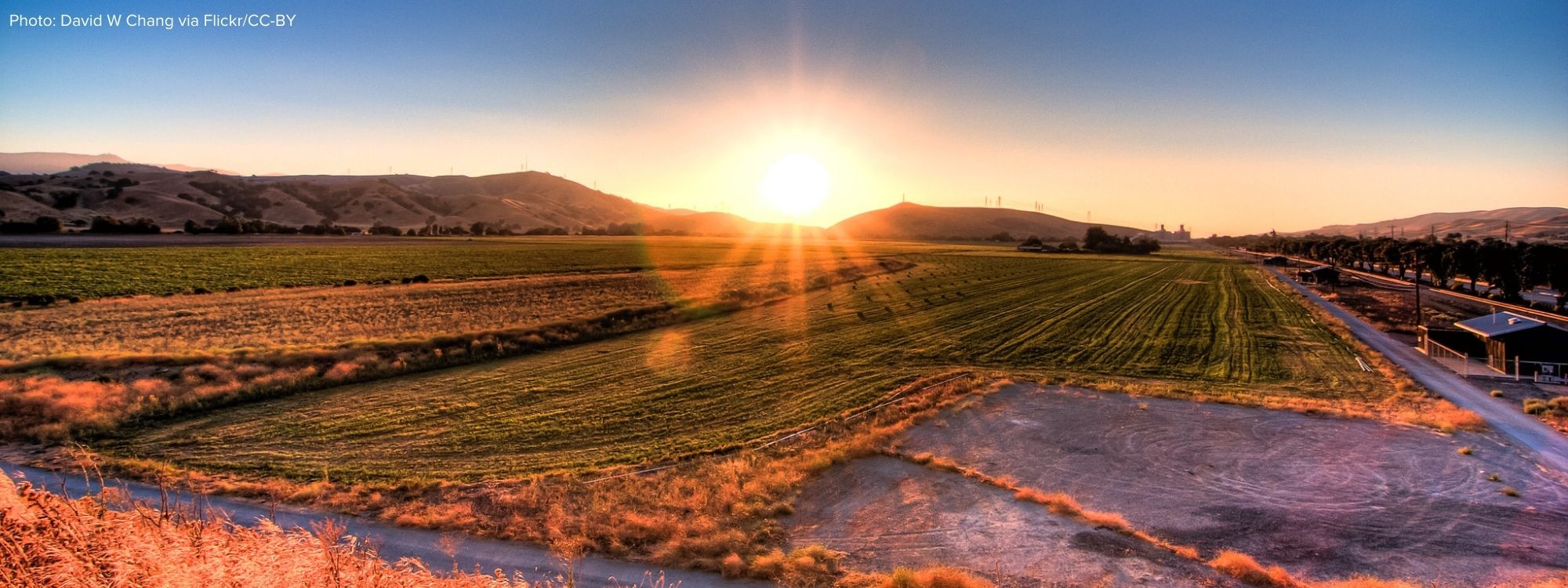Updated on November 17, 2021, to reflect recent decisions from City Council. Originally posted on November 17, 2020.
After a joint effort by many organizations, San José’s City Council unanimously voted to protect the awe-inspiring landscape of the Coyote Valley, in the South Bay, during a meeting that went until late at night on November 16.
“The City of San José remains committed to safeguarding our most precious resources for future generations,” the mayor Sam Liccardo tweeted a few minutes after the decision was made.
Tonight, my Council colleagues joined me in unanimously approving zoning changes to Coyote Valley to protect 314 acres of land from potential industrial development. The @CityofSanJose remains committed to safeguarding our most precious resources for future generations.
— Sam Liccardo (@sliccardo) November 17, 2021
For decades, Greenbelt Alliance and partners have fought to protect Coyote Valley from inappropriate development threats—from technology campuses to sprawling subdivisions. This time, the San José’s City Council held a crucial vote to decide on making General Plan amendments that would protect Coyote Valley by removing industrial land-use designation and rezoning it for open space and agriculture. You can see more details about the meeting here.
We thank the City Council for taking a stand and making the right decision for the benefit of our region, the dozens of partners who rallied to protect Coyote Valley, and all the hundreds of supporters who took action by sending an email to the City Council, sharing it on social media, and making a public comment.
Recent Threats
This big win for open space came after a disappointing 5-4 vote decision from the San Jose Planning Commission, in October 2021, to deny the protection of Coyote Valley and allow for development. According to our friends from the Protect Coyote Valley campaign: “at the Planning Commission meeting, a Texas-based industrial developer announced that the real estate investment company that owns hundreds of acres in North Coyote Valley has contracted with them to build approximately 2.3 million square feet of industrial warehouse/distribution center buildings, with loading bays for over 500 trucks at a time. It would be located right on what is currently a very popular farmstand and pumpkin patch. Instead of acres of corn and pumpkins, fresh vegetables for sale, and a place for families to enjoy Halloween fun, there would be two giant warehouses with hundreds of trucks coming and going every day.”
Previously, in October 2020, the vast majority of the San Jose General Plan Task Force voted to protect Coyote Valley—preserving it as open space for wildlife and limited agricultural use.
What’s At Stake in Coyote Valley?
This is 7,400 acres of lush farmland and vast open space that is a crucial water resource for Silicon Valley, it being a recharge area for the water table that provides water to San Jose. It’s a floodplain that absorbs water and protects San Jose from extreme flooding events. It is home to wildlife, including endangered species. Coyote Valley is critical to the ecosystem of the entire South Bay.
We must protect Coyote Valley from sprawl development because:
- It provides natural resources we depend on, especially as we combat climate change.
- It provides critical habitat to some of the Bay Area’s most precious species.
- Coyote Valley is the largest undeveloped portion of Silicon Valley’s groundwater aquifer.
- The valley’s wetlands and riparian areas act as natural water treatment plants that improve groundwater quality.
- Coyote Valley has over 2,500 acres of floodplain, providing flood protection to residents of south San Jose.
- Nearly 1 million people in San Jose and 2 million people in Santa Clara County benefit from the farming Coyote Valley provides.
- Coyote Valley is home to wildlife like badgers and mountain lions who rely on this open space to safely cross from the Santa Cruz Mountain Range to Mount Hamilton/Diablo Range.
- Coyote Ridge as part of Coyote Valley features some of the best wildflower displays in California on its serpentine soil.
- The Endangered Species Act-listed Bay Checkerspot Butterfly thrives in the Coyote Ridge of the valley.
- Threatened Steelhead Trout still migrate up through Coyote Valley’s Coyote Creek.
More Resources
Get our signature report, At Risk: The Bay Area Greenbelt, for more information about places across the Bay Area in danger of being lost to sprawl development.
For questions or more information about our work in Coyote Valley or the South Bay, feel free to reach out to our Advocacy Manager, Justin Wang.




